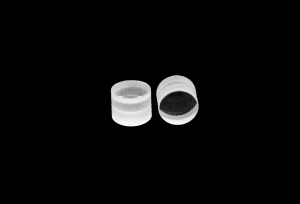Key Takeaways
- Achromatic lenses, or achromats, correct chromatic aberration in optical systems by aligning specific wavelengths.
- Comprising two or more elements, typically red and blue, these lenses improve image quality in applications like cameras and microscopes. While effective, achromatic lenses may have limitations, such as residual chromatic aberration and complex manufacturing processes, resulting in bulkiness.
- They find ideal use in scenarios requiring high-quality imaging, reduced color distortion, broad spectral range, and precision optics, making them cost-effective alternatives to more complex lenses in applications where optical quality is crucial.
An achromatic lens, often referred to as an achromat, is a specialized optical lens designed to correct chromatic aberration—a distortion that occurs when white light is refracted into different color wavelengths within the spectrum.
Chromatic aberration is a common optical flaw that manifests when white light traverses through a single lens. As the light wavelengths pass through the lens material, they undergo differential refraction due to varying optical properties. Consequently, these wavelengths converge at distinct focal points within the image plane, preventing the simultaneous focus of all colors. This effect leads to the appearance of blurred color fringes between the contrasting areas of an image, resulting in a notable degradation of image quality.
To address the challenge posed by chromatic aberrations, achromatic lenses are employed. These optical components incorporate two or more lens elements, strategically engineered to align two specific wavelengths of light—typically red and blue—to converge at a shared focal point. This correction mechanism effectively mitigates the undesirable effects of chromatic aberration, ensuring improved image quality and color fidelity.


Achromatic Lenses
Merits of Achromatic Lenses:
- Chromatic Aberration Correction: Achromatic lenses are primarily designed to correct chromatic aberration, a common optical defect where different colors of light focus at different points. These lenses combine two different lens elements, typically one with low dispersion and one with high dispersion, to minimize chromatic aberration, resulting in sharper and more accurate images.
- Improved Image Quality: By reducing chromatic aberration, achromatic lenses enhance image quality, particularly in optical systems like telescopes, microscopes, and camera lenses. This improvement is especially noticeable at high magnifications.
- Wide Spectral Range: Achromatic lenses are effective over a broad spectral range, making them suitable for applications across the visible spectrum as well as into the near-infrared and ultraviolet regions.
- Versatility: These lenses come in various shapes and sizes, making them versatile for a wide range of optical systems and applications. They can be configured as doublets, triplets, or even aspheric lenses to meet specific requirements.
Demerits of Achromatic Lenses:
- Limited Correction: While achromatic lenses are effective in reducing chromatic aberration, they may not completely eliminate it. Some residual chromatic aberration may still be present, especially in low-cost or less precise achromatic lenses.
- Complex Manufacturing: Achromatic lenses require careful selection of materials with specific dispersion properties, precise alignment, and cementing of lens elements. This complexity in manufacturing can result in higher production costs.
- Bulkiness: Achromatic lenses often consist of multiple elements, which can make them larger and heavier compared to simple lenses. This bulkiness may not be suitable for all applications.
When to Use Achromatic Lenses:
Then when should we choose Achromatics Lenses?
- High-Quality Imaging: Achromatic lenses are ideal when you require high-quality, color-corrected images. They are commonly used in cameras, telescopes, microscopes, and other optical instruments where accurate color rendering is crucial.
- Reducing Color Distortion: If your optical system exhibits noticeable color fringing or distortion, achromatic lenses can help minimize these effects, leading to clearer and more accurate results.
- Broad Spectral Range: When your application spans a wide spectral range, such as in spectroscopy or photography, achromatic lenses are preferred due to their ability to correct chromatic aberration across a range of wavelengths.
- Precision Optical Systems: In applications demanding precise and controlled optical performance, such as in scientific research, medical imaging, or aerospace, achromatic lenses are a suitable choice to ensure accurate results.
- Cost Considerations: While they can be more expensive than simple lenses, achromatic lenses provide a cost-effective solution when compared to more complex corrective optics like apochromatic lenses. Therefore, they are often chosen in scenarios where cost is a factor but optical quality is still critical.
In summary, achromatic lenses are valuable tools for correcting chromatic aberration and improving image quality in a wide range of optical applications. They are especially beneficial when color accuracy and performance across a broad spectral range are essential. However, their suitability depends on the specific requirements and constraints of your optical system.
GREAT ARTICLE!
Share this article to gain insights from your connections!

